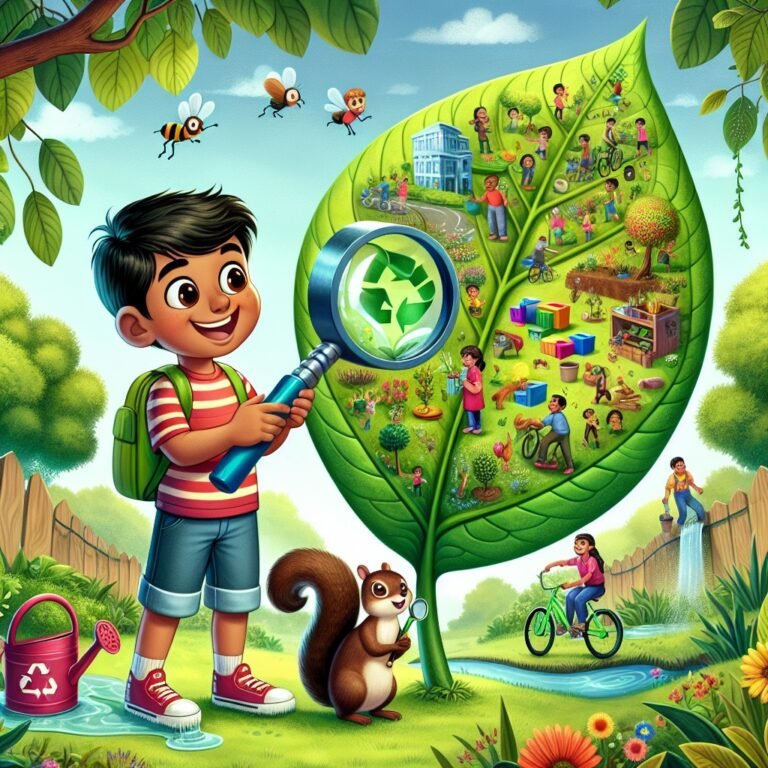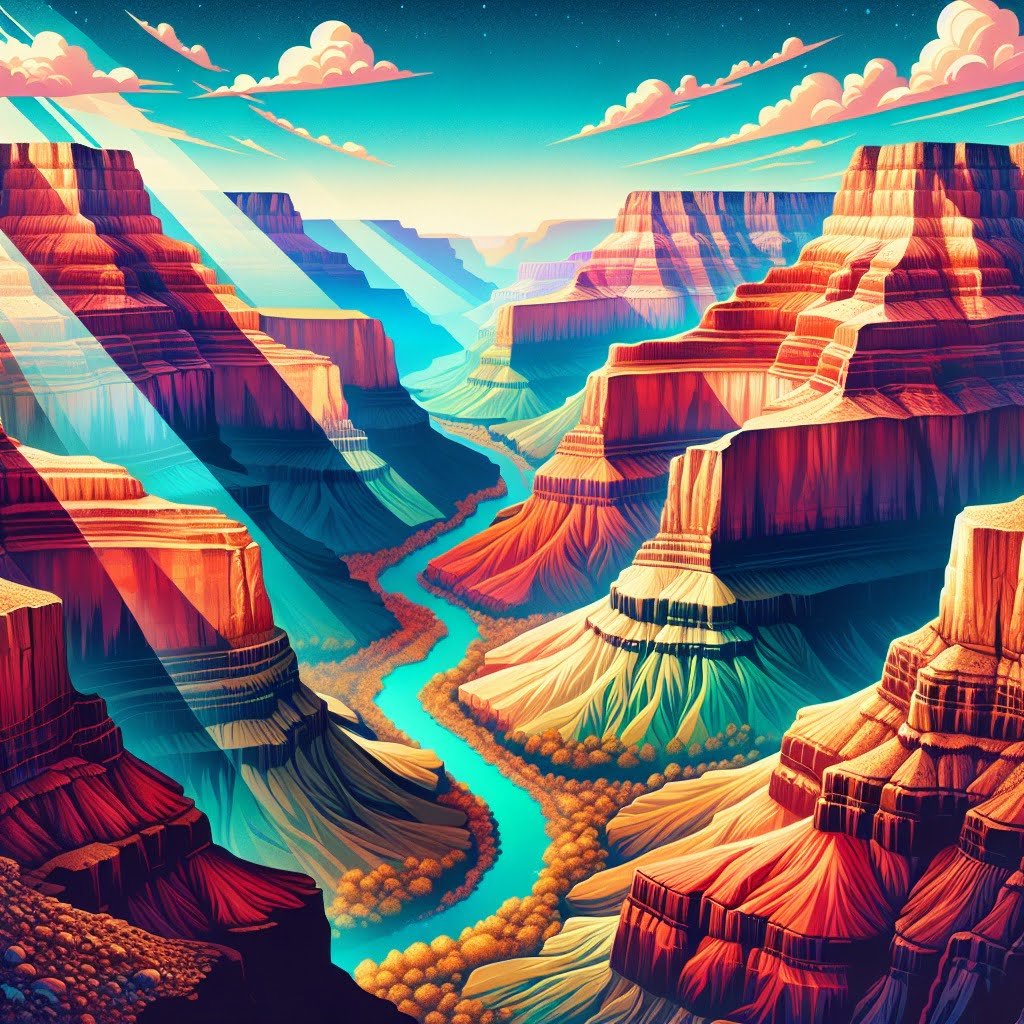Welcome to a captivating journey into the world of Fun Facts for Kids About Environment! As an expert in environmental science and a skilled writer of popular science blogs, I am thrilled to share with you fascinating insights about our planet that will inspire and educate young minds. In this blog post, we will explore engaging facts about the Amazon Rainforest, recycling, the Great Barrier Reef, glass bottle decomposition, Arctic wildlife, trees absorbing carbon dioxide, the Mariana Trench, light pollution, the ozone layer, and water usage. By delving into these fun facts, we can spark curiosity, instill a sense of wonder, and foster a love for nature in children. Let’s embark on this exciting journey together and learn how we can protect and preserve our environment for generations to come. Thank you for joining me on this enlightening exploration of Fun Facts for Kids About Environment!
Fun Facts for Kids About Environment
1. The Amazon Rainforest Produces 20% of the World’s Oxygen
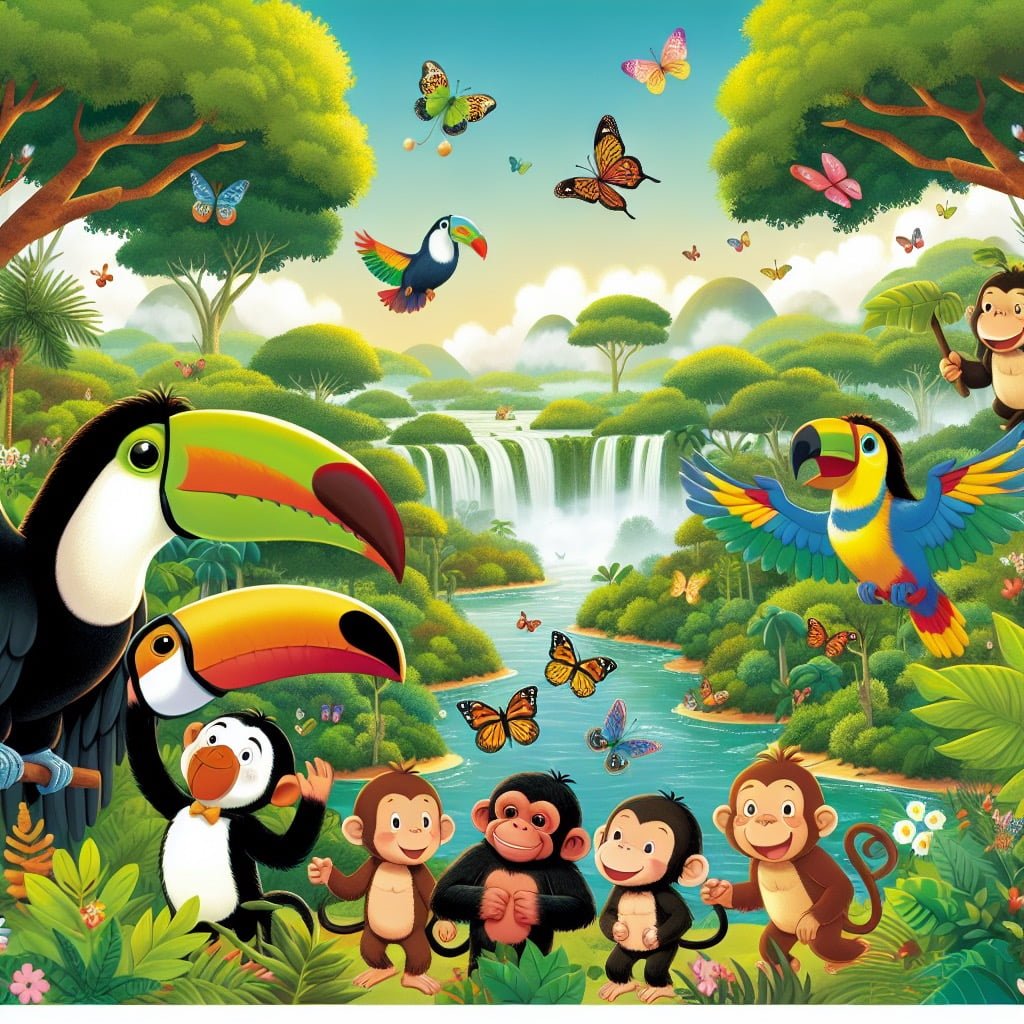
For younger kids: The Amazon Rainforest makes lots of fresh air for us to breathe!
For older kids: The Amazon Rainforest, often called the lungs of the Earth, is responsible for producing approximately 20% of the world’s oxygen, making it vital for all living beings.
Detailed explanation:The Amazon Rainforest is often referred to as the “lungs of the Earth” due to its incredible ability to produce oxygen. It is estimated that this vast and biodiverse ecosystem produces approximately 20% of the world’s oxygen. This is a truly remarkable statistic that highlights the importance of forests in sustaining life on our planet.
One of the primary reasons why the Amazon Rainforest is able to produce so much oxygen is because of the process of photosynthesis. During photosynthesis, plants take in carbon dioxide and water, and using sunlight as energy, they convert these into glucose and oxygen. This oxygen is then released into the atmosphere, providing the essential element that all living beings need to survive.
In addition to producing oxygen, the Amazon Rainforest also plays a crucial role in regulating the Earth’s climate. The dense vegetation of the rainforest helps to absorb and store carbon dioxide, a greenhouse gas that contributes to global warming. By sequestering carbon dioxide, the rainforest helps to mitigate the impacts of climate change and keep our planet in balance.
It is important for us to recognize the vital role that the Amazon Rainforest plays in sustaining life on Earth. By raising awareness about the importance of preserving this precious ecosystem, we can help protect it from deforestation and ensure that future generations continue to benefit from its oxygen-producing abilities. Fun facts for kids about the environment can inspire them to become environmental stewards and take action to protect our planet for years to come.
Fun Facts for Kids About Environment
2. Recycling One Ton of Paper Saves 17 Trees
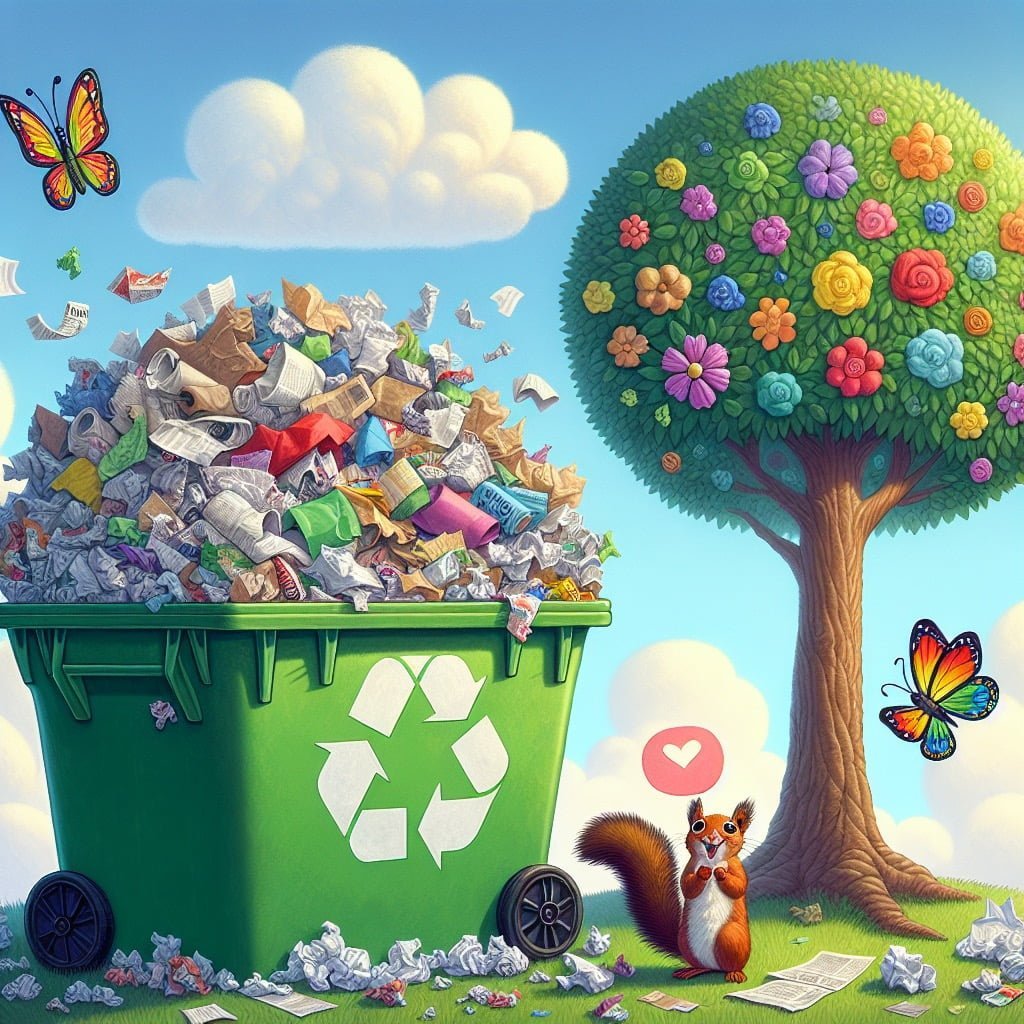
For younger kids: When we recycle paper, we help save many trees and protect the environment!
For older kids: By recycling one ton of paper, we can save approximately 17 trees, reduce pollution, save energy, and conserve natural resources.
Detailed explanation:Fun Facts for Kids About Environment: Did you know that recycling one ton of paper can save up to 17 trees? This is an important statistic that showcases the impact of recycling on our environment.
When paper is recycled, it is transformed into new paper products, reducing the need to cut down more trees. Trees play a crucial role in our ecosystem by providing oxygen, absorbing carbon dioxide, and supporting biodiversity. By recycling paper, we can help preserve our forests and the valuable benefits they provide to the planet.
The process of making paper from trees involves cutting them down, chipping the wood into small pieces, and then pulping and processing the wood to make paper. This process not only requires a significant amount of energy, but also contributes to deforestation and habitat loss for countless plant and animal species.
By recycling paper instead, we can conserve natural resources, reduce energy consumption, and decrease greenhouse gas emissions. In addition to saving trees, recycling paper also helps save water and reduce air pollution. It is a simple yet powerful way for individuals to make a positive impact on the environment.
Teaching kids about the importance of recycling and its benefits, such as saving trees, can inspire them to become more environmentally conscious and responsible citizens. By instilling these values at a young age, we can help create a more sustainable future for generations to come. So next time you’re finished with a piece of paper, remember to recycle it and do your part in protecting our planet’s precious resources.
Fun Facts for Kids About Environment
3. The Great Barrier Reef is the World’s Largest Living Structure
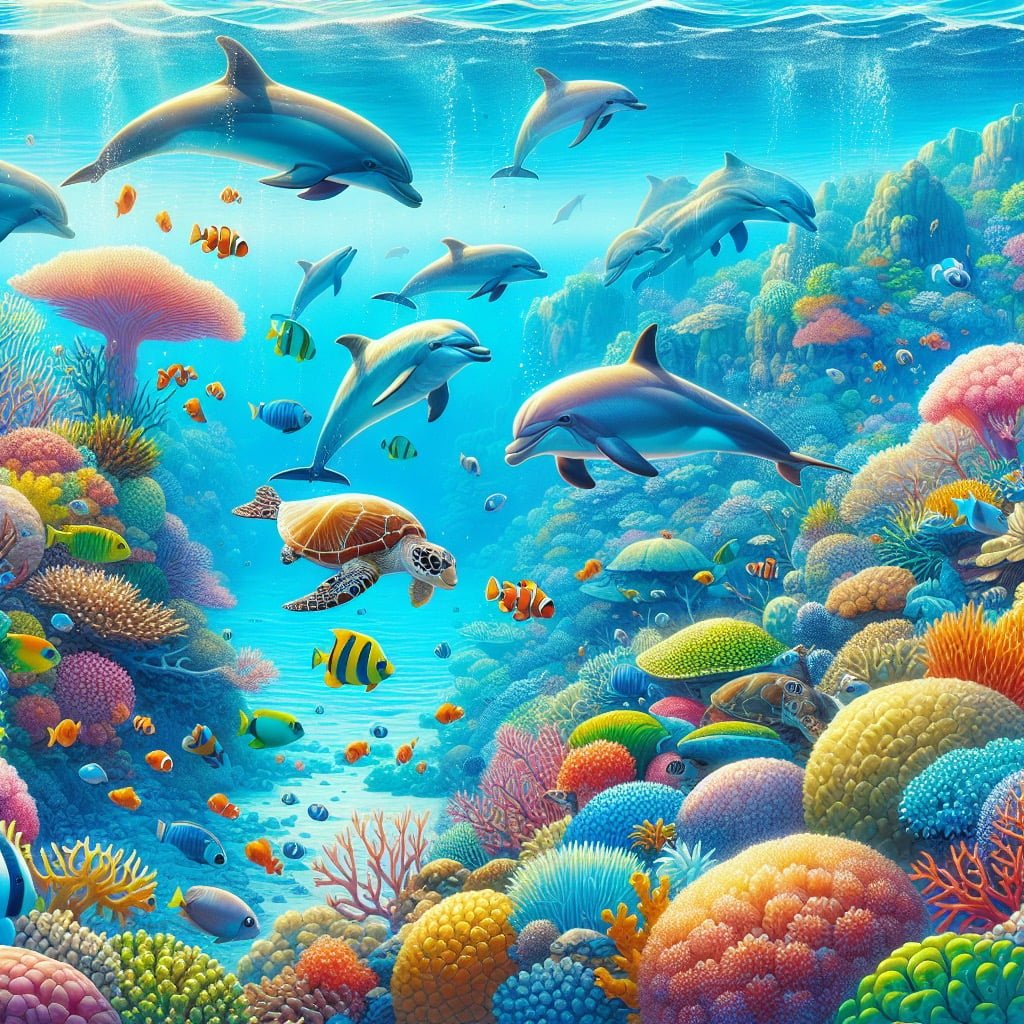
For younger kids: The Great Barrier Reef is like a giant underwater city for many sea creatures!
For older kids: Stretching over 2,300 kilometers, the Great Barrier Reef is not only the largest coral reef system but also the largest living structure on the planet, supporting a diverse range of marine life.
Detailed explanation:The Great Barrier Reef, located off the coast of Queensland, Australia, is indeed the world’s largest living structure. Stretching over 2,300 kilometers and covering an area of approximately 344,400 square kilometers, the Great Barrier Reef is not only visible from outer space but also home to an incredible diversity of marine life.
One of the most fascinating Fun Facts for Kids About Environment is that the Great Barrier Reef is actually composed of billions of tiny organisms called coral polyps. These small creatures secrete calcium carbonate to form hard exoskeletons, which eventually build up and create the structure we know as coral reefs. This intricate process takes thousands of years, making the Great Barrier Reef a true marvel of nature.
The Great Barrier Reef is not only a breathtaking sight for tourists and divers, but it also plays a crucial role in supporting marine ecosystems. It provides a habitat for thousands of species of fish, sharks, sea turtles, and colorful coral formations. In fact, it is estimated that the reef is home to over 1,500 species of fish and 411 species of hard coral, making it one of the most biodiverse habitats on Earth.
However, the Great Barrier Reef is currently facing numerous threats, including climate change, ocean acidification, overfishing, and pollution. These factors have led to widespread coral bleaching events, where the coral loses its vibrant colors and becomes susceptible to disease and death. Conservation efforts are underway to protect this natural wonder and ensure that future generations can continue to marvel at the beauty of the world’s largest living structure.
Fun Facts for Kids About Environment
4. One Glass Bottle Takes 1 Million Years to Decompose

For younger kids: Glass takes a really, really long time to turn into dirt again!
For older kids: It takes approximately 1 million years for a glass bottle to decompose in a landfill, highlighting the importance of recycling and reducing waste.
Detailed explanation:Fun Facts for Kids About Environment can often be surprising and eye-opening, like the fact that it takes one glass bottle 1 million years to decompose. This staggering number highlights the importance of reducing, reusing, and recycling to help protect our planet.
Glass is a unique material because it is 100% recyclable and can be recycled endlessly without losing its quality or purity. However, when glass is not recycled and ends up in a landfill, it can take an incredibly long time to break down. Unlike other materials that decompose in a matter of years or decades, glass bottles will sit in landfills for centuries, slowly breaking into smaller pieces but never truly disappearing.
The long decomposition time of glass bottles is due to their chemical composition and durability. Glass is made from sand, soda ash, and limestone, which are all natural materials. However, the process of turning these raw materials into glass requires extremely high temperatures, which give glass its strength and resilience. This durability is what makes glass a great packaging material, but it also means that it takes a very long time to break down in the environment.
By learning Fun Facts for Kids About Environment like the decomposition time of glass bottles, we can better understand the impact of our daily choices on the planet. By choosing to recycle our glass bottles instead of throwing them away, we can help reduce the amount of waste in landfills and protect the environment for future generations.
Fun Facts for Kids About Environment
5. The Arctic is Home to polar bears, walruses, and narwhals.
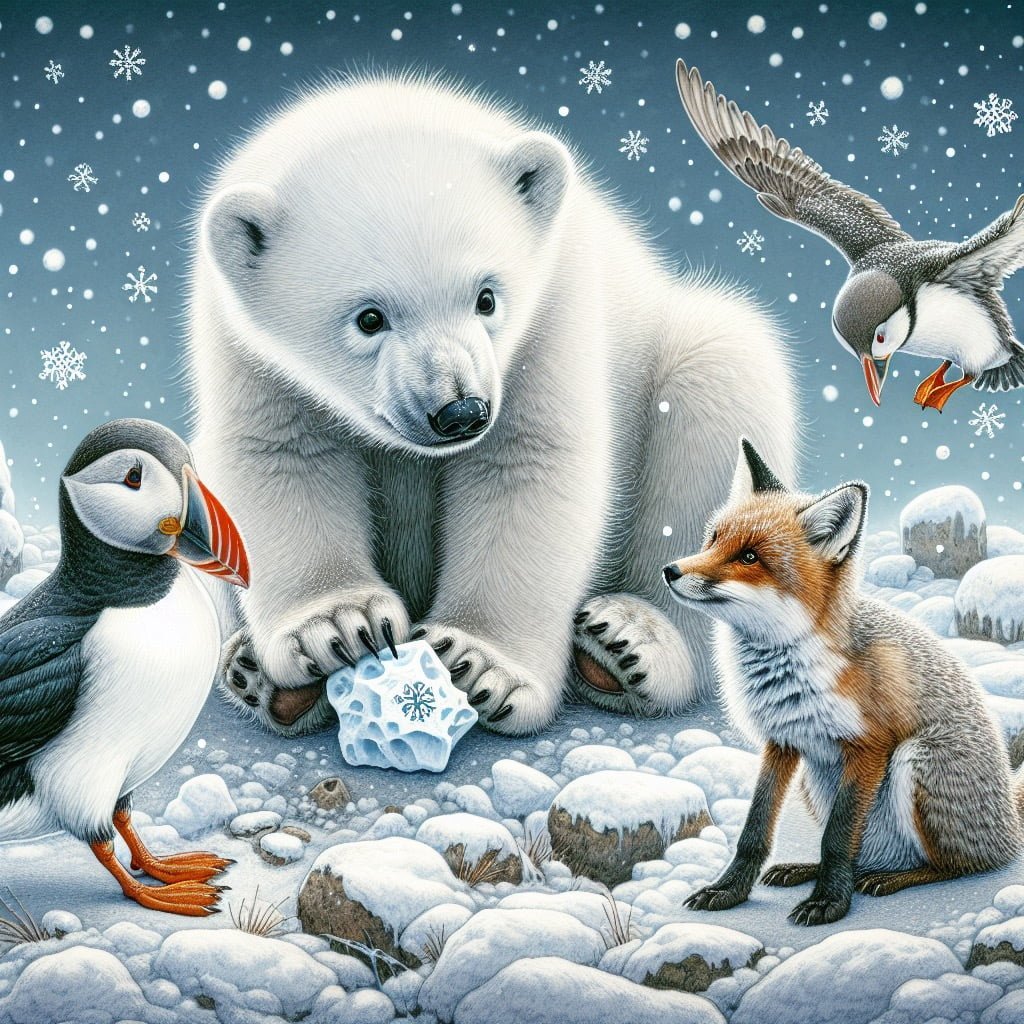
For younger kids: The Arctic is like a snowy wonderland for many special animals!
For older kids: The Arctic region is home to a variety of unique wildlife, including polar bears, walruses, narwhals, and various bird species adapted to the harsh cold environment.
Detailed explanation:The Arctic region is a fascinating and diverse ecosystem that is home to a variety of unique and iconic animals, including polar bears, walruses, and narwhals. These animals have evolved to thrive in the harsh and icy conditions of the Arctic, and each plays a significant role in maintaining the delicate balance of this environment.
Polar bears are perhaps the most well-known inhabitants of the Arctic and are perfectly adapted to life on the sea ice. With their thick fur coats and layers of blubber, they are able to withstand the frigid temperatures and icy waters of the region. Polar bears are powerful swimmers and rely on the sea ice to hunt for their main prey, seals. Unfortunately, climate change is having a devastating impact on polar bear populations as the sea ice melts and habitats disappear.
Walruses are another fascinating Arctic animal, known for their large tusks and whiskers. These marine mammals rely on sea ice for resting, giving birth, and avoiding predators. Walruses are also highly social animals and can often be found in large groups, or “haulouts,” hauled out on ice floes or beaches. Like polar bears, walruses are facing threats from climate change as their habitats shrink and food sources become less abundant.
Finally, the narwhal is perhaps one of the most mysterious and elusive animals in the Arctic. Known for its long, spiraled tusk, the narwhal is actually a type of whale. These unique creatures are skilled deep divers and can swim to depths of over 1,500 meters in search of prey, such as fish and squid. Narwhals are expertly adapted to their icy environment, with specialized blubber to insulate them from the cold and a flexible neck that allows them to maneuver under the sea ice.
In conclusion, the Arctic is a truly remarkable environment filled with fascinating animals like polar bears, walruses, and narwhals. By learning more about these creatures and the challenges they face due to climate change, we can better appreciate the importance of conservation efforts in protecting this fragile ecosystem. Fun Facts for Kids About Environment can help educate the younger generation about the wonders of the Arctic and the importance of preserving its unique wildlife.
Fun Facts for Kids About Environment
6. A Single Tree Can Absorb as Much as 48 Pounds of Carbon Dioxide Per Year
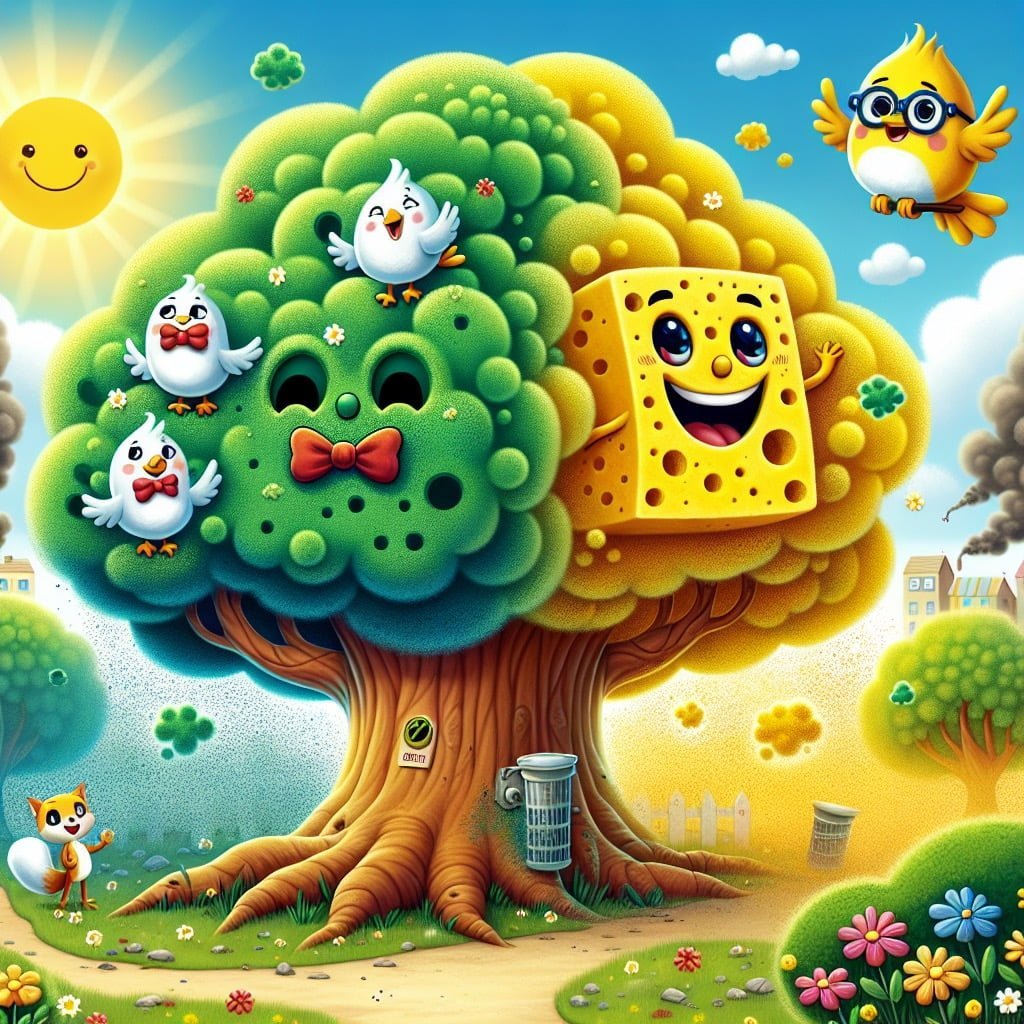
For younger kids: Trees are like big sponges that soak up yucky air and make it clean!
For older kids: Trees play a crucial role in absorbing carbon dioxide, with a single tree capable of absorbing up to 48 pounds of CO2 per year, helping to combat climate change.
Detailed explanation:Fun Facts for Kids About Environment: Did you know that a single tree has the incredible ability to absorb up to 48 pounds of carbon dioxide per year? This is a fascinating aspect of the environment that highlights the important role that trees play in combating climate change.
Trees are able to absorb carbon dioxide through a process called photosynthesis. During this process, trees take in carbon dioxide from the air and water from the ground, then use sunlight to convert these ingredients into glucose and oxygen. The glucose is used as food for the tree, while the oxygen is released back into the atmosphere. This cycle helps to remove carbon dioxide, a major greenhouse gas, from the air.
In addition to absorbing carbon dioxide, trees also provide numerous other benefits to the environment. They help to reduce air pollution, provide habitat for wildlife, prevent soil erosion, and even have a cooling effect on the surrounding area. By planting more trees and protecting existing forests, we can help to mitigate the effects of climate change and create a healthier planet for future generations.
So, next time you see a tree, remember that it is not just a beautiful part of nature, but also a powerful ally in the fight against global warming. Each tree is a valuable asset in the battle to reduce carbon emissions and protect our environment for years to come.
Fun Facts for Kids About Environment
7. The World’s Deepest Ocean Trench is the Mariana Trench
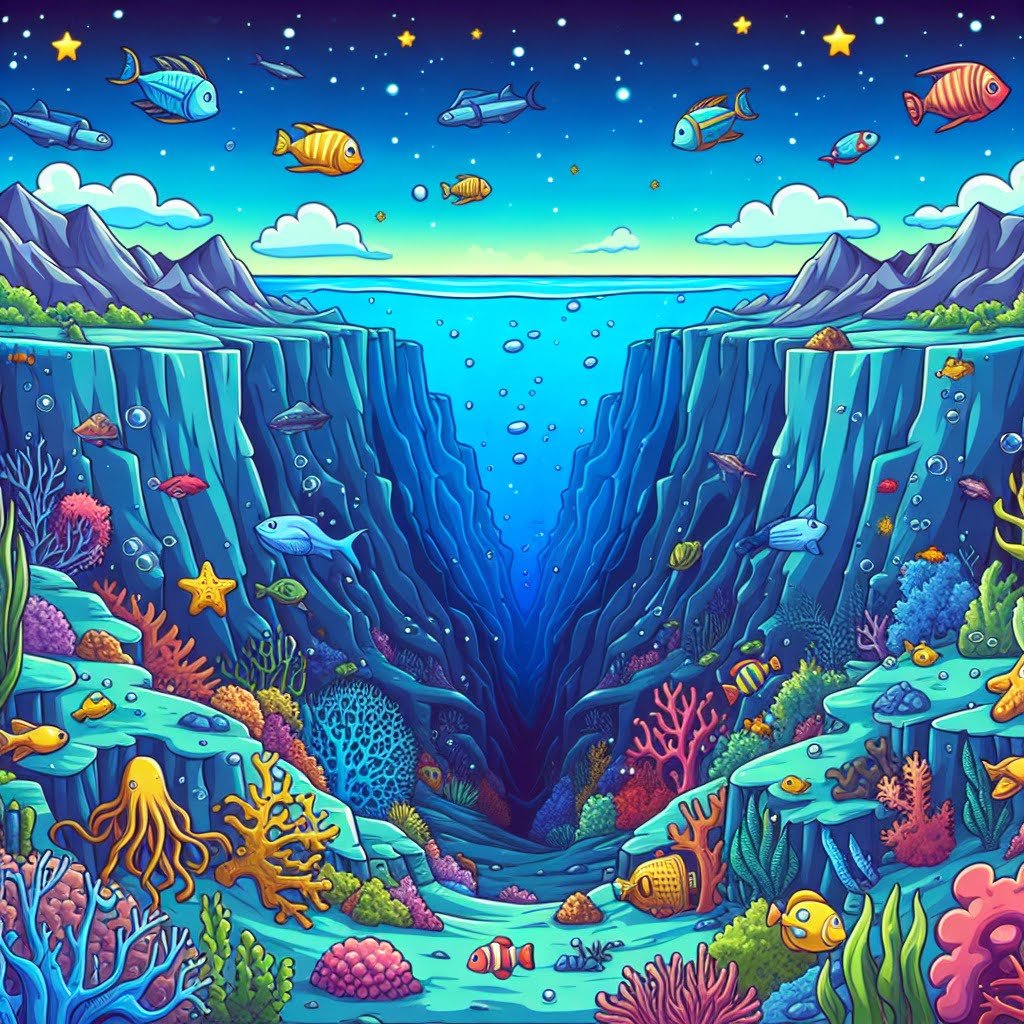
For younger kids: The Mariana Trench is like the deepest, deepest hole in the whole ocean!
For older kids: The Mariana Trench in the western Pacific Ocean is the deepest natural trench on Earth, plunging to a depth of 36,070 feet, deeper than Mount Everest is tall.
Detailed explanation:The Mariana Trench is the deepest part of the world’s oceans, with a maximum known depth of around 36,070 feet. Located in the western Pacific Ocean, to the east of the Mariana Islands, this trench is a result of the tectonic activity in the region. The Mariana Trench is known for its extreme depth and pressure, as well as its unique ecosystems that have adapted to survive in such harsh conditions.
One of the most fascinating aspects of the Mariana Trench is the presence of the Challenger Deep, which is the deepest known point in the ocean. It reaches a depth of about 36,070 feet, making it a truly remarkable feature of the Earth’s topography. Exploring this trench has been a significant challenge for scientists and researchers due to the immense pressure and darkness at such depths.
Fun Facts for Kids About Environment can be found in the incredible diversity of species that have been discovered in the Mariana Trench. Despite the extreme conditions, a variety of organisms have been found thriving in this deep-sea environment. These include unique types of fish, crustaceans, and other deep-sea creatures that have adapted to survive in the darkness and cold temperatures of the trench.
In addition to its biological diversity, the Mariana Trench plays a crucial role in understanding the Earth’s geology and plate tectonics. Studying this trench provides valuable insights into the processes that shape our planet and the forces that drive tectonic activity. By learning more about the Mariana Trench, scientists can better understand the complex interactions between the Earth’s oceans and its crust.
Overall, the Mariana Trench is a fascinating and important feature of the Earth’s oceans. Its extreme depth and unique ecosystems make it a key area of study for scientists interested in understanding the depths of the ocean and the mysteries that lie within. Fun Facts for Kids About Environment can be found in the remarkable discoveries and ongoing research that continue to shed light on this incredible underwater world.
Fun Facts for Kids About Environment
8. Light Pollution Affects Nocturnal Animals

For younger kids: Too many lights at night can make it hard for animals to sleep and find their way around!
For older kids: Excessive artificial light at night disrupts the sleep patterns and navigation abilities of nocturnal animals, impacting their reproduction, foraging, and communication.
Detailed explanation:Light pollution is a significant issue that affects both humans and wildlife, particularly nocturnal animals. When we think of pollution, we often think of air or water pollution, but light pollution is a lesser-known but equally harmful form of pollution.
For many nocturnal animals, such as owls, bats, and insects, the cover of darkness is essential for their survival. However, with the ever-increasing urbanization and the widespread use of artificial light at night, many of these animals are finding it increasingly difficult to navigate and hunt for food. This disruption of their natural behavior patterns can have devastating effects on their populations.
One of the most immediate impacts of light pollution on nocturnal animals is the disruption of their circadian rhythms. Just like humans, animals have internal biological clocks that regulate their sleep-wake cycles and other physiological processes. Artificial light at night can confuse these rhythms, leading to changes in behavior, reproduction, and overall health.
Furthermore, light pollution can also interfere with the ability of nocturnal animals to communicate. Many species use light cues to signal to potential mates, warn off predators, or navigate in their environment. Excessive artificial light can disrupt these signals, leading to a breakdown in social structures and mating patterns.
In conclusion, light pollution is a serious environmental issue that not only affects human health but also has a profound impact on nocturnal animals. By raising awareness and taking steps to reduce light pollution in our communities, we can help protect these creatures and preserve the balance of our ecosystems. Fun Facts for Kids About Environment can help educate children and inspire them to take action in their own lives to combat light pollution and other environmental threats.
Fun Facts for Kids About Environment
9. The Ozone Layer Protects Earth from Harmful UV Radiation
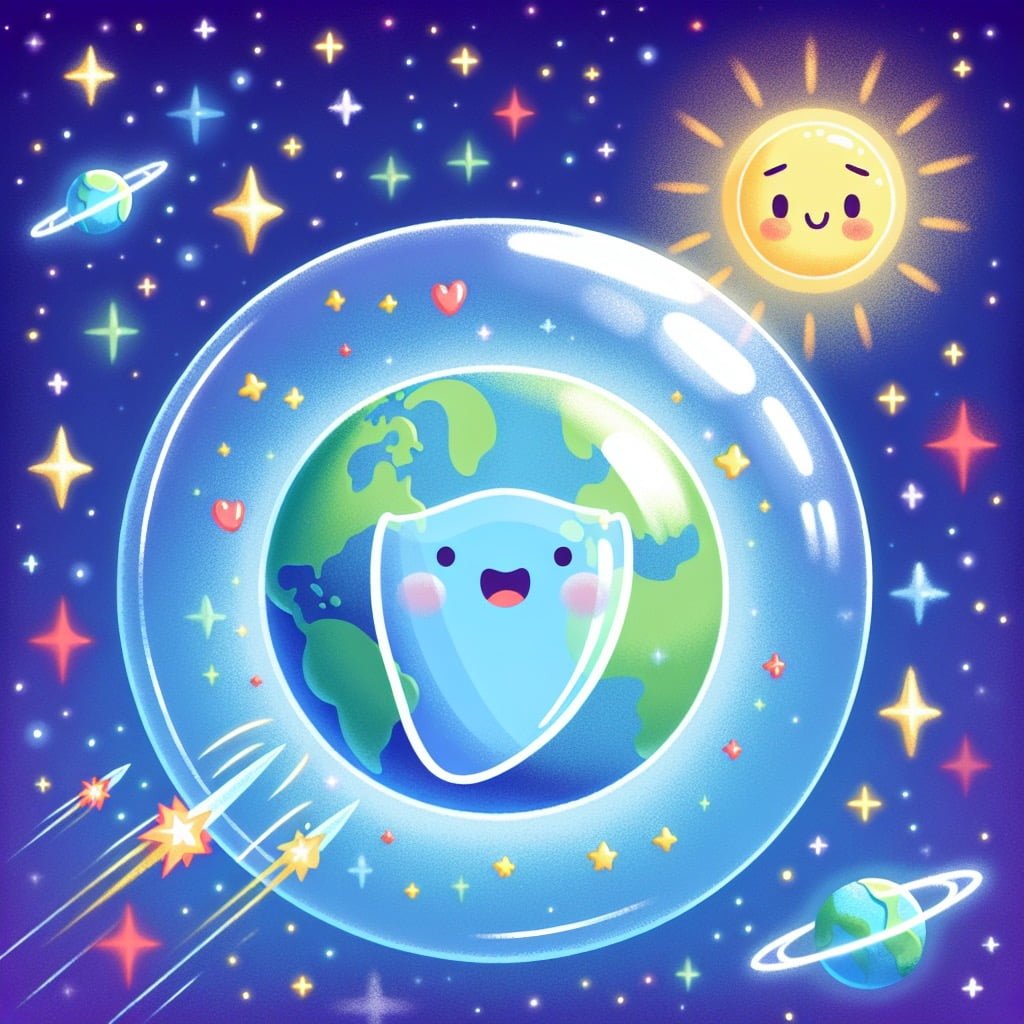
For younger kids: The ozone layer is like a big shield that protects us from the sun’s strong rays!
For older kids: The ozone layer high in the Earth’s atmosphere functions as a protective barrier, absorbing and deflecting the majority of the sun’s harmful ultraviolet radiation, safeguarding life on Earth.
Detailed explanation:The ozone layer is a vital component of Earth’s atmosphere, located in the stratosphere approximately 10 to 30 kilometers above the Earth’s surface. This layer of ozone gas acts as a shield, protecting our planet from harmful ultraviolet (UV) radiation emitted by the sun. UV radiation can be extremely damaging to living organisms, causing genetic mutations, skin cancer, and other health issues.
Fun Facts for Kids About Environment
The ozone layer absorbs the majority of the sun’s UV radiation, particularly the most harmful type known as UV-B. Without this protective layer, UV-B radiation would reach the Earth’s surface in much higher levels, posing a serious threat to all life forms. In fact, increased exposure to UV radiation can also have harmful effects on plants and ecosystems, leading to decreased crop yields and disruptions in food chains.
The ozone layer has been under threat in recent decades due to human activities, particularly the release of ozone-depleting substances such as chlorofluorocarbons (CFCs). These chemicals break down ozone molecules, leading to a thinning of the ozone layer and the formation of the infamous ozone hole over Antarctica.
Fortunately, global efforts such as the Montreal Protocol have been successful in phasing out the production of CFCs, leading to a gradual recovery of the ozone layer. However, it is important for us to continue to monitor and protect this vital shield to ensure the health and well-being of our planet and its inhabitants. The ozone layer truly is a crucial protector of life on Earth, shielding us from the harmful effects of UV radiation.
Fun Facts for Kids About Environment
10. An Average American Uses 100 Gallons of Water Each Day
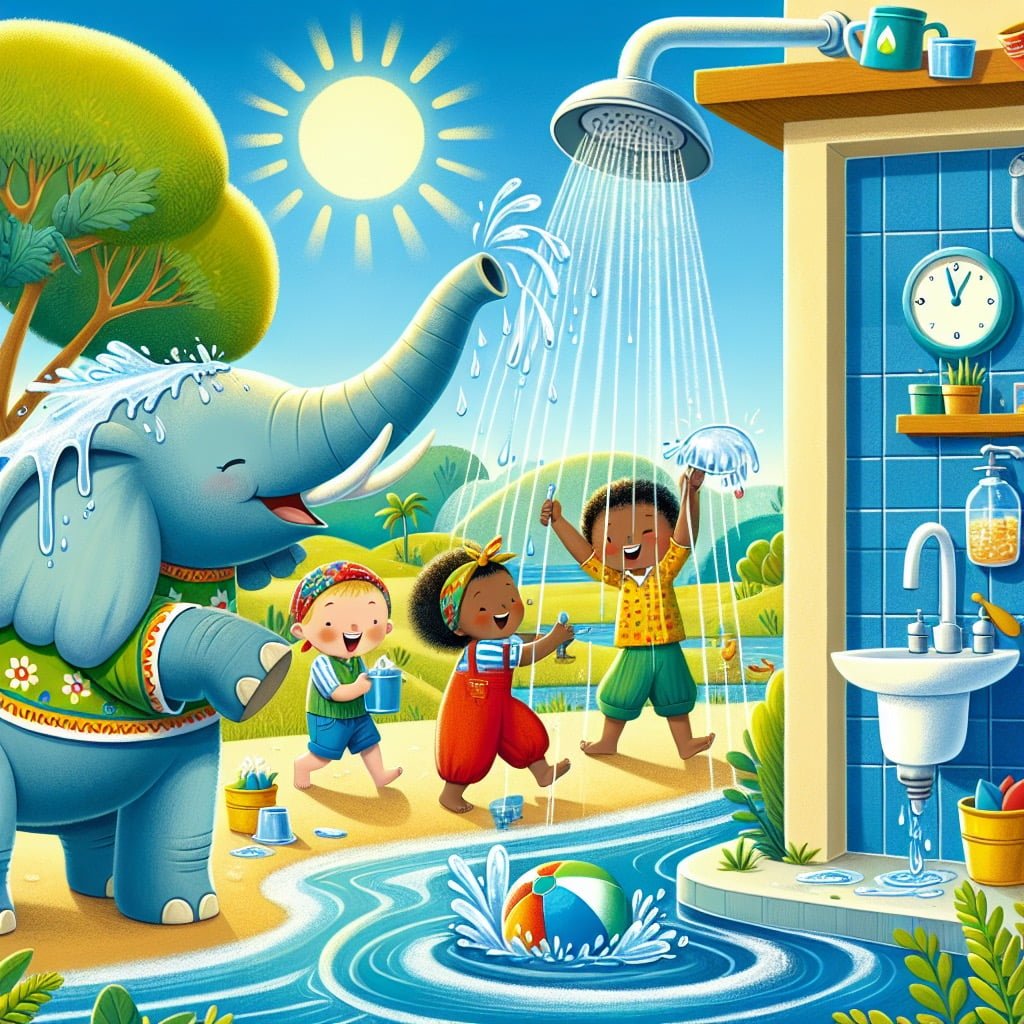
For younger kids: We use a lot of water every day for washing, drinking, and playing!
For older kids: The average American uses about 100 gallons of water daily, emphasizing the importance of water conservation and mindful usage to protect this valuable resource for future generations.
Detailed explanation:Water is an essential resource that we use in our daily lives for a variety of purposes, from drinking and cooking to cleaning and bathing. Despite its importance, many of us may not realize just how much water we consume on a daily basis. In fact, the average American uses a staggering 100 gallons of water each day. This statistic may be surprising to some, but when we break it down, it becomes easier to understand how we reach this high number.
One of the main contributors to our daily water usage is our habits when it comes to flushing toilets, showering, and doing laundry. These activities can use a significant amount of water, especially if we are not mindful of our consumption. Additionally, water-intensive tasks such as washing dishes, watering the garden, and filling up swimming pools can also add to our overall water usage.
It is important to be aware of our water consumption and take steps to conserve this precious resource. Simple actions such as fixing leaky faucets, taking shorter showers, and using water-saving appliances can all help reduce our water usage. Teaching kids about the importance of water conservation is also crucial for the future of our planet.
In conclusion, while it may seem like a large number, the fact that the average American uses 100 gallons of water each day serves as a reminder of the importance of being mindful of our water usage and taking steps to conserve this vital resource. Fun Facts for Kids About Environment can help educate young minds about the importance of water conservation and inspire them to take action to protect our planet’s water sources.
Did You Know?
Pollution and human activities have a significant impact on the environment, but by working together, we can make a positive difference and create a healthier planet for all living creatures.
Summary of Fun Facts for Children About the Environment
Exploring fun facts about the environment is not only educational but also incredibly engaging for children. By sharing these fun facts with kids, we can ignite a passion for nature and inspire them to become active stewards of the planet from a young age. Learning about the environment in a fun and interactive way can help children develop a deeper connection with nature and understand the importance of conservation efforts.
Moreover, fun facts about the environment can spark curiosity and creativity in children, encouraging them to ask questions, think critically, and explore the world around them. It can also help them develop a sense of wonder and appreciation for the beauty and complexity of the natural world.
By reading more about fun facts for kids about the environment, you can provide your children with a fun and enriching learning experience that will not only increase their knowledge but also empower them to make a positive impact on the world. So, join us on this exciting journey of discovery and exploration of the wonders of the environment!
Sources and additional information for Fun Facts for Kids About Environment
WikipediaBritannicaEnvironmental Protection Agency (EPA)National Oceanic and Atmospheric Administration (NOAA)The Nature ConservancyWorld Wildlife FundEarth Day NetworkGreenpeace InternationalJane Goodall InstituteEnvironmental Protection Agency (EPA)World Wildlife Fund – ConservationNature ConservancyGreenpeaceUnited Nations Environment Programme (UNEP)Conservation InternationalEarthwatch InstituteEnvironmental Defense FundSierra Club
